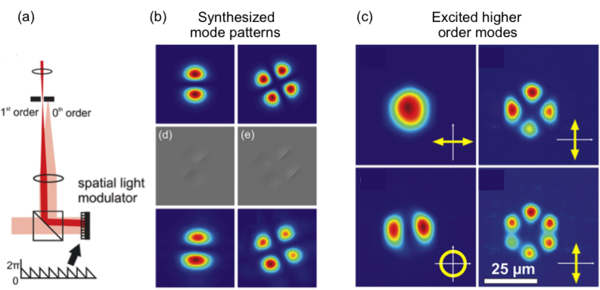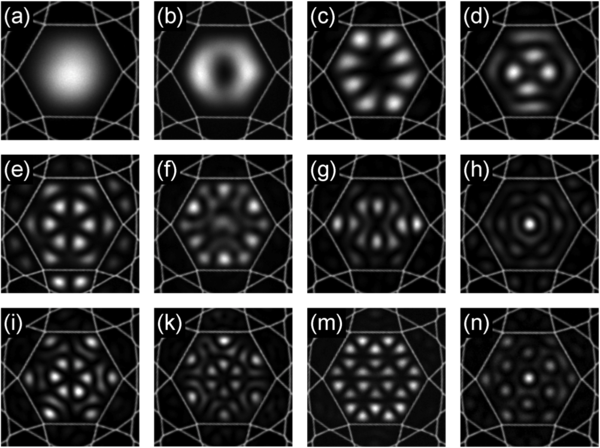Precise excitation of higher order modes
It is quite difficult to excite higher order modes precisely in hollow core PCF, because of the difficulty of matching the fields in both amplitude and phase. This becomes increasingly difficult as the mode order rises. Spatial light modulators work rather well for low order modes, but for high order modes we have found prism-assisted side-coupling to be extremely useful both for measuring the modal refractive indices of the modes (very difficult to do any other way) and for mapping out the transverse field intensity patterns.







